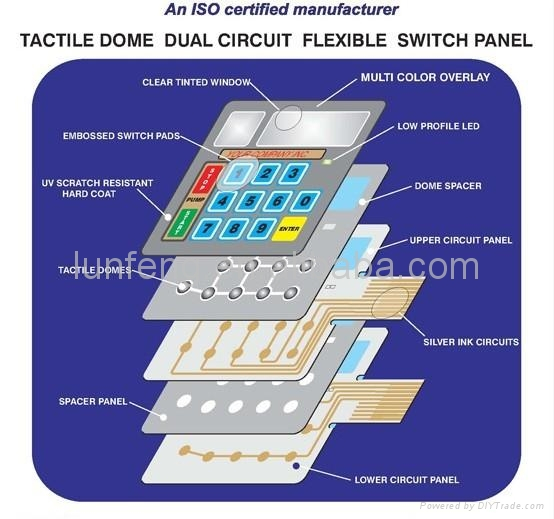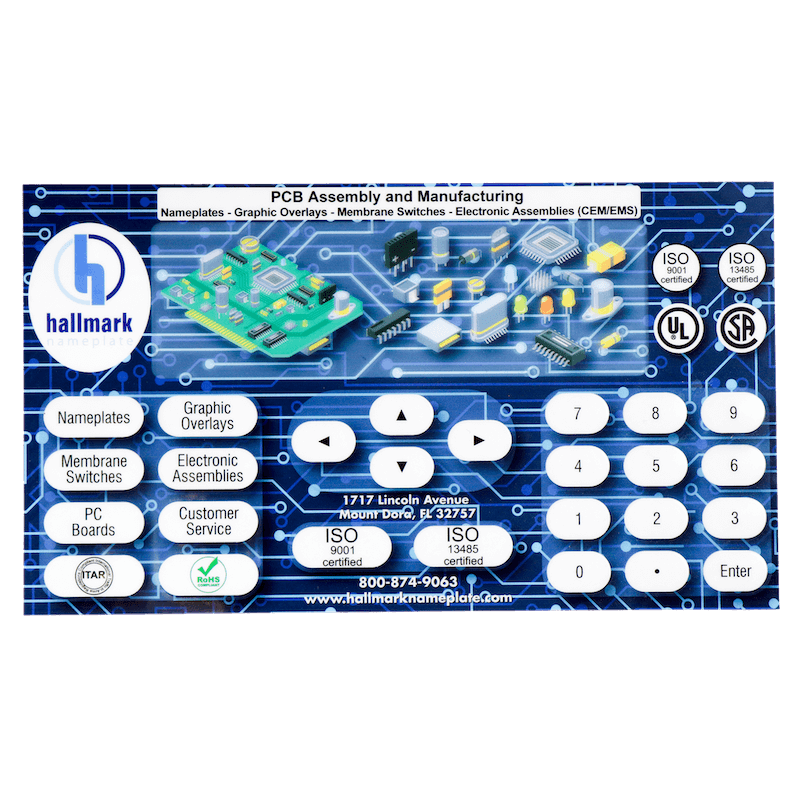Membrane Switches vs. Traditional Switches: What You Need to Know
Wiki Article
Discover Just How Membrane Switches Function and Their Role in Modern Electronics
Membrane Switches stand for an advanced assimilation of innovation and design within the realm of modern-day electronics, acting as essential user interfaces in various devices. Consisted of numerous layers, these buttons use pressure-sensitive devices to promote customer interaction. Their applications span different sectors, from customer electronic devices to clinical equipment, highlighting their adaptability and importance. Recognizing the intricacies of Membrane button performance and their wider effects in boosting user experience welcomes additional expedition into their style, advantages, and the innovative growths forming their future in technology.
What Are Membrane Buttons?

Membrane buttons are differentiated by their longevity and resistance to ecological aspects, such as dust, moisture, and extreme temperature levels. They can be personalized with different graphics, colors, and tactile feedback choices, improving individual experience while maintaining aesthetic allure - membrane switches. Furthermore, the unification of published circuits enables smooth combination right into gadgets, improving general functionality.
The convenience of Membrane buttons is noticeable in their capability to support both complicated and easy control features. They can incorporate features such as LED signs and touch-sensitive technology, satisfying details user needs. As modern technology remains to progress, Membrane Switches stay vital for making it possible for efficient and user-friendly interface, thus playing a crucial role in the innovation of modern electronic devices.
Parts of Membrane Buttons
Membrane buttons are made up of several crucial parts that collaborate to develop a trustworthy and useful interface. The main aspects consist of the visuals overlay, adhesive layer, spacer layer, and conductive traces.The graphic overlay works as the user interface, normally printed on a flexible substratum such as polyester or polycarbonate. This layer not only provides visual allure yet also consists of tactile comments, visual cues, and protective features. Beneath the visuals overlay exists the sticky layer, which protects the switch to the device and guarantees sturdiness versus environmental stresses.
The spacer layer is essential for preserving the essential gap between the visuals overlay and the circuit layer. This void permits the activation of the switch when pressure is applied. The conductive traces, usually made from silver or carbon, create the electrical paths that finish the circuit when the switch is engaged.
In addition, a backing layer might be included for architectural assistance and insulation. These components team up effortlessly, ensuring that Membrane switches are both durable and easy to use, making them important in different modern digital applications.
Just How Membrane Switches Work
How do Membrane Switches function properly within electronic gadgets? Membrane Switches run on the concepts of pressure-sensitive technology, utilizing a blog layered building that includes visuals overlays, glue layers, and conductive elements.The style of Membrane switches is critical for their efficient procedure (membrane switches). The layers are thoroughly crafted to provide responsive comments, resilience, and resistance to environmental aspects such as moisture and dirt. The addition of domes-- small, raised locations within the switch-- enhances responsive feedback, providing users with a recognizable click feeling upon activation
Additionally, Membrane switches can be customized in regards to size, shape, and graphics, making them suitable for different applications. They are often used in control panels, clinical devices, and consumer electronic devices due to their sleek layout and reliability. Generally, the reliable functioning of web link Membrane buttons is essential in enhancing customer communication and making certain seamless procedure in modern electronic devices.

Applications in Modern Tools
Using their one-of-a-kind style and capability, Membrane buttons have become indispensable components in a large range of modern electronic gadgets. These functional user interfaces are used in customer electronics, industrial devices, clinical devices, and vehicle controls, giving seamless customer communication.In consumer electronic devices, Membrane switches are generally found in appliances like microwaves, washing machines, and various other house devices, where they enable user-friendly control with a sleek profile. Their low-profile design helps with combination right into small devices, improving visual appeal without compromising functionality.
In commercial applications, Membrane Switches serve as control board for equipment, providing resilience and resistance to rough settings. Their ability to stand up to moisture and impurities makes them perfect for use in production and processing industries.
Medical gadgets also benefit from Membrane buttons, which are designed to be very easy to clean and preserve, making certain hygiene in clinical setups. They are commonly made use of in diagnostic equipment, patient tracking systems, and mobile medical tools, where integrity is paramount.
Advantages of Membrane Buttons
One of the essential benefits of Membrane switches is their flexibility, which permits them to be tailored for a selection of applications across numerous industries. These buttons can be designed in various sizes and shapes, suiting unique item needs while supplying smooth integration right into devices. Their slim profile enables a portable and streamlined layout, commonly enhancing the visual charm of electronic items.Another substantial advantage is their longevity - membrane switches. Membrane buttons are generally immune to dirt, moisture, and chemicals, making them excellent for severe settings. This durability extends their life-span contrasted to conventional mechanical buttons, lowering the requirement for constant replacements
Additionally, Membrane Switches deal cost-effectiveness. The production procedure link includes printing technologies that lessen production costs, specifically for large runs. This affordability, integrated with low upkeep needs, makes them an attractive choice for producers.

Conclusion
To conclude, Membrane Switches stand for a substantial innovation in customer interface innovation within modern-day electronic devices. Their split building, pressure-sensitive procedure, and versatility to numerous applications emphasize their value across numerous industries. The sturdiness and environmental resistance of Membrane Switches additionally boost their allure, making them a favored choice for makers seeking trusted and personalized remedies. As the need for resistant and intuitive user interfaces proceeds to grow, the duty of Membrane switches fit individual experience will certainly broaden.Membrane Switches represent a sophisticated assimilation of modern technology and layout within the realm of contemporary electronic devices, offering as necessary user interfaces in various devices.In the realm of modern electronic devices, Membrane Switches serve as critical parts that promote individual communication with gadgets. As modern technology continues to evolve, Membrane Switches stay necessary for allowing intuitive and reliable user interfaces, consequently playing a critical function in the development of modern digital gadgets.
How do Membrane Switches function successfully within electronic tools? In general, the reliable functioning of Membrane buttons is critical in boosting individual communication and ensuring smooth operation in contemporary electronic tools.
Report this wiki page